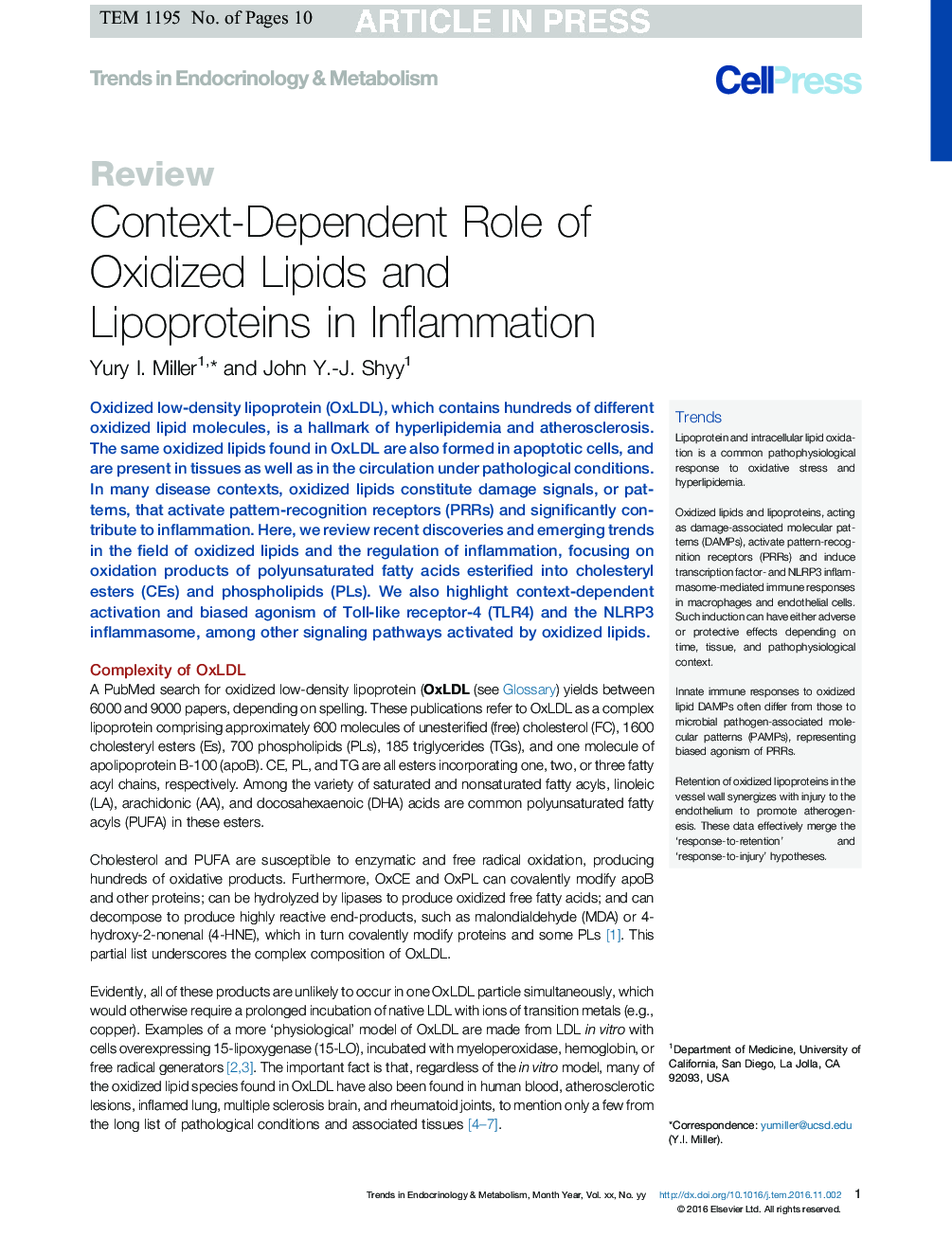| Article ID | Journal | Published Year | Pages | File Type |
|---|---|---|---|---|
| 5588779 | Trends in Endocrinology & Metabolism | 2017 | 10 Pages |
Abstract
Oxidized low-density lipoprotein (OxLDL), which contains hundreds of different oxidized lipid molecules, is a hallmark of hyperlipidemia and atherosclerosis. The same oxidized lipids found in OxLDL are also formed in apoptotic cells, and are present in tissues as well as in the circulation under pathological conditions. In many disease contexts, oxidized lipids constitute damage signals, or patterns, that activate pattern-recognition receptors (PRRs) and significantly contribute to inflammation. Here, we review recent discoveries and emerging trends in the field of oxidized lipids and the regulation of inflammation, focusing on oxidation products of polyunsaturated fatty acids esterified into cholesteryl esters (CEs) and phospholipids (PLs). We also highlight context-dependent activation and biased agonism of Toll-like receptor-4 (TLR4) and the NLRP3 inflammasome, among other signaling pathways activated by oxidized lipids.
Related Topics
Life Sciences
Biochemistry, Genetics and Molecular Biology
Endocrinology
Authors
Yury I. Miller, John Y.-J. Shyy,
